Who doesn’t love a good assistant in a yoga training class? I know I do. There’s nothing like hopping up into Salamba Sirsasana (Handstand) or having someone there to help you find balance, or getting a juicy foot rub in Savasana (Corpse Pose).
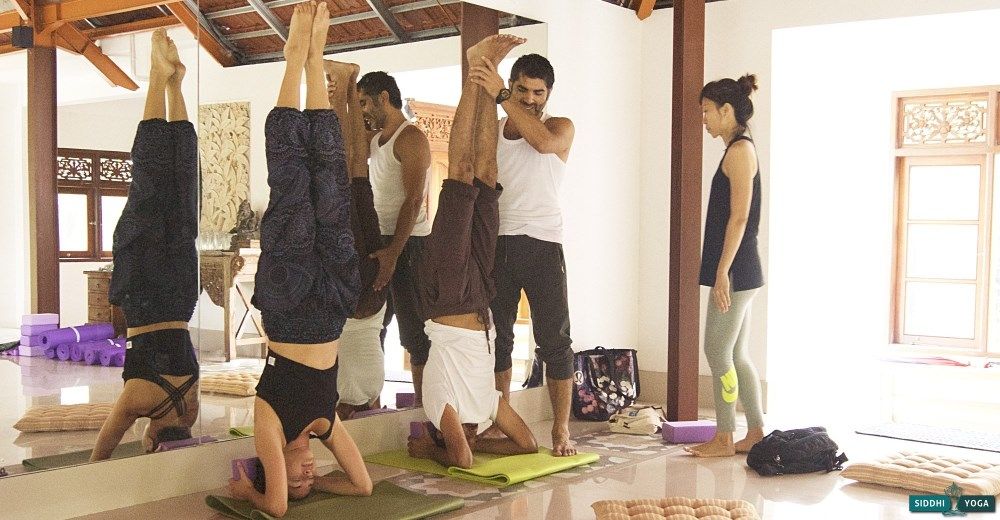
However, there has been some debate recently on whether yoga teachers should incorporate physical adjustments into their classes at all.
While there are concerns about safety and what is or is not appropriate, assists can be a vital part of a yoga practice—as long as they’re given with mindfulness and intention.
So what kinds of adjustments are okay and which aren’t? Let’s dive in.
DO: Get Assistant Certified
If you want to be good at assisting—or be a yoga teacher’s assistant—set aside a weekend or two to learn how to do it. You may not have spent a lot of time assisting in yoga teacher training, so an extra overview will be beneficial.
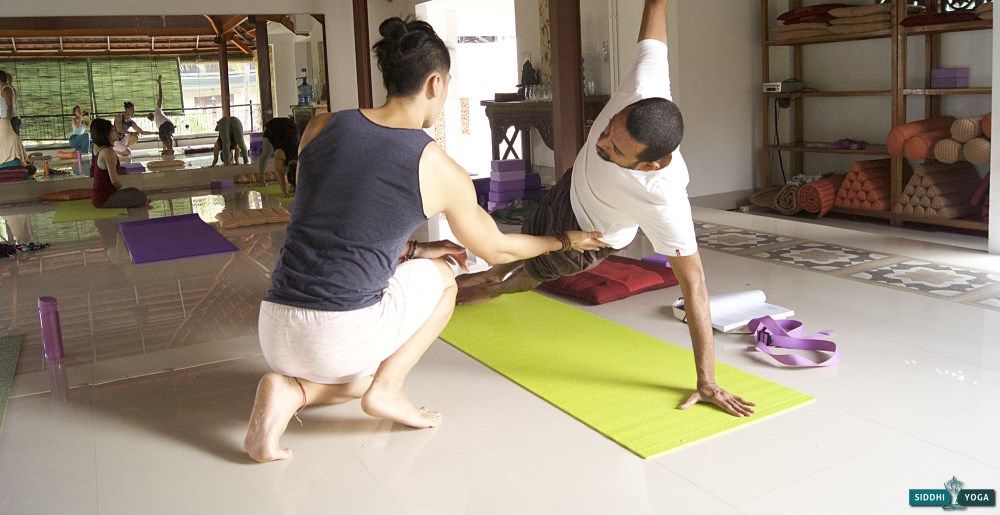
At an Assistant workshop or training weekend, you’ll learn about the alignment, anatomy, and adjustments suitable for each asana (pose). You’ll be better prepared to help other yogis deepen and advance their practice, safely and carefully.
DON’T: Critique Too Much
There’s a difference between changing a pose and adjusting a pose. The adjustments are great. They’re helpful, they often feel really good and they don’t make anyone feel bad about themselves.
Changing a pose, however, doesn’t feel so nice. If someone needs help getting into an asana, by all means, give him or her an assist. But if all you’re doing is changing the shape of someone’s body to make it look ‘right’ or ‘wrong,’ back off.
I once took a yoga class where the instructor tried to physically move my body to make it fit into a cookie-cutter version of what each pose is ‘supposed’ to look like. Not only was this physically painful at times, I felt awful afterward.
The only time we should ever be trying to change a yogi’s pose is if they’re about to hurt themselves. Otherwise, stick to adjusting.
DO: Develop a Repertoire of Assists
Before you set foot in a yoga class and begin assisting, make sure you have a collection of assists you can use in most classes. Adjustments for Adho Mukha Svanasana (Downward Facing Dog), Virabhadrasana I/II (Warrior I/II), and Savasana will be useful in most classes, so it’s nice to have them handy.
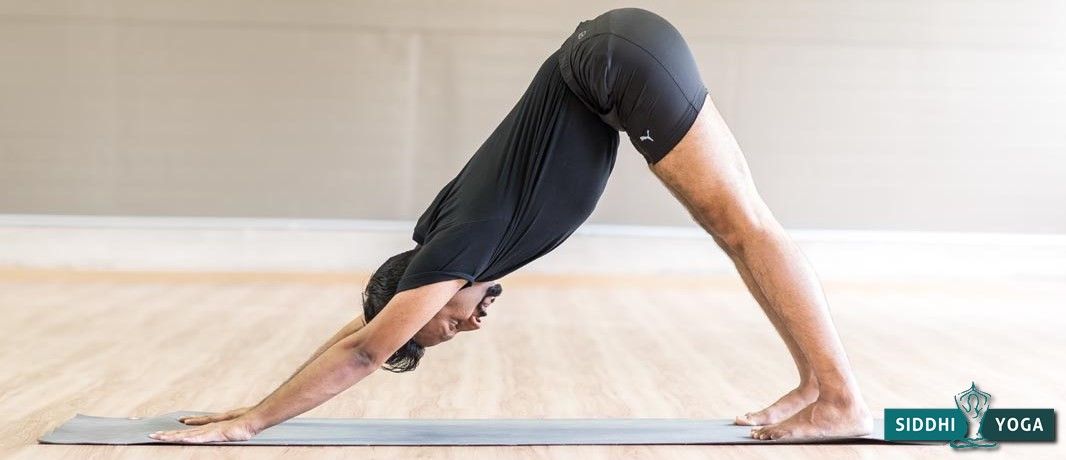
Keeping a few assists in your back pocket is also good because it helps you practice safe adjustments. If you decide to try a new adjustment for the first time in a class, you risk injuring someone.
DON’T: Tweak, Twist, Push, or Pull
This is a sensitive topic among yogis. A lot of practitioners enjoy having their poses deepened. And that’s fine, as long as you’re leaving the deepening to them.
You can help somebody deepen their twist without physically turning their shoulders further and further. Instead, try stabilizing their hips so they can more easily deepen their twist.
For example, if I’m in Utkatasana (Chair pose), doing a prayer twist to the right, you could stand on my left, place your right hand on my right hip (avoiding my buttocks) and stabilize my hips between your right hand and right hip/leg.
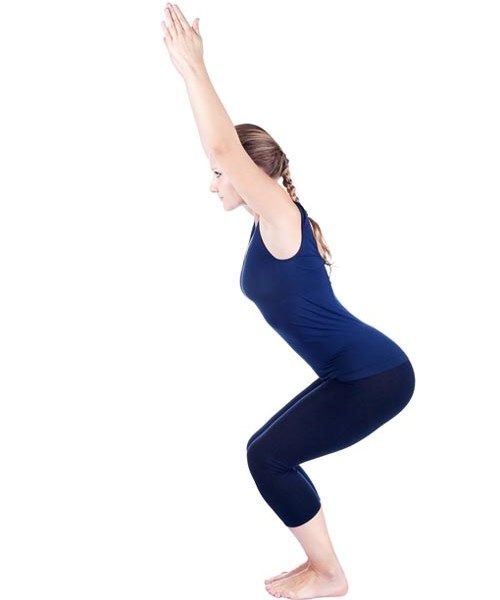
This way, you’d create a stronger foundation for me to twist more deeply on my own.
Anytime we try to deepen a pose through force, we risk hurting someone. Just because they look like they’re flexible doesn’t mean they are.
Use common sense. If you’re exerting force on someone rather than lengthening, stabilizing, or supporting, it might be time to rethink that assist. If you ever have any doubts, don’t do it.
DO: Get Out of the Way
It’s okay to back off if no adjustments are necessary, and they won’t always be. If you’re assisting a flow class, you might not need to adjust anyone during the flow sequences. Again, use common sense here.
If you feel like you’re going to be in the way, it’s better to just take a step back and let the class flow.
Yogis and teachers alike will be thankful you’re not getting in between them and their practice. Whether you’re teaching or assisting, be mindful about where you’re walking so you don’t knock anyone over or get in the way of the practice.
Don’t: Get Weird
If common sense were ever a factor in yoga, it’s right here. Do not, under any circumstances, touch people in inappropriate places, or touch them with inappropriate parts of yourself.
To put it bluntly—no groping, no touching breasts, genital areas, or buttocks, and don’t stand in awkward places.
For example, if someone is in Prasarita Padottanasana (Standing Wide-Legged Forward Bend pose), don’t stand directly behind his or her buttocks. It doesn’t matter how well-intentioned you are. If someone is questioning your position, intentions won’t matter.
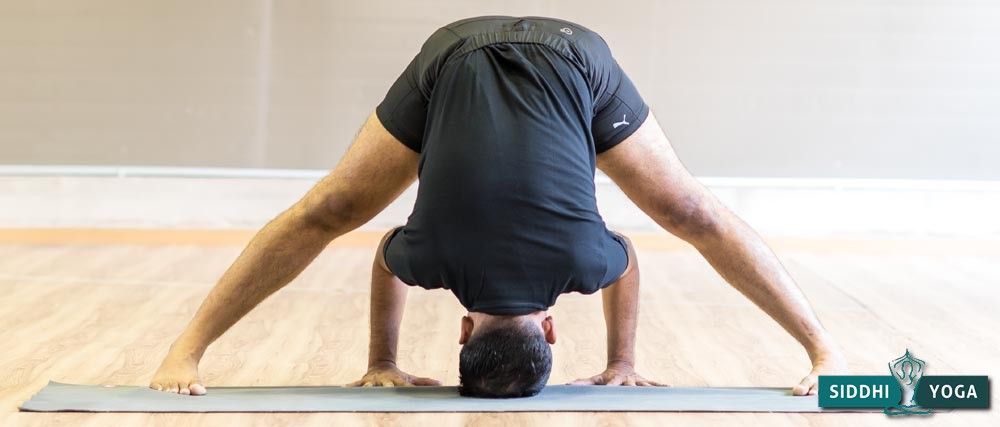
The last thing anybody wants to feel in yoga is uncomfortable, so be mindful of how and where you decide to assist someone.
In short, It’s always a good idea to educate yourself when incorporating a new aspect into your yoga classes.
And if you’re not comfortable assisting or giving adjustments, you don’t have to do it! If you’re uncomfortable, your students will be too. Take your time, learn the skills you need, and only give adjustments when you’re ready.
The Bottom Line
Respecting personal boundaries and practicing clear communication in physical adjustments is crucial in creating a safe and inclusive yoga or fitness class environment. Prioritizing the well-being and autonomy of participants ensures a positive and empowering experience for everyone involved.
Ready to take your yoga practice to the next level and embark on a journey of self-discovery and growth? Join our transformative yoga teacher training programs today and become a certified yoga instructor. Unlock your full potential and share the gift of yoga with others. Don’t miss this opportunity; enroll now and embark on a path of fulfillment and mindfulness.
Responses